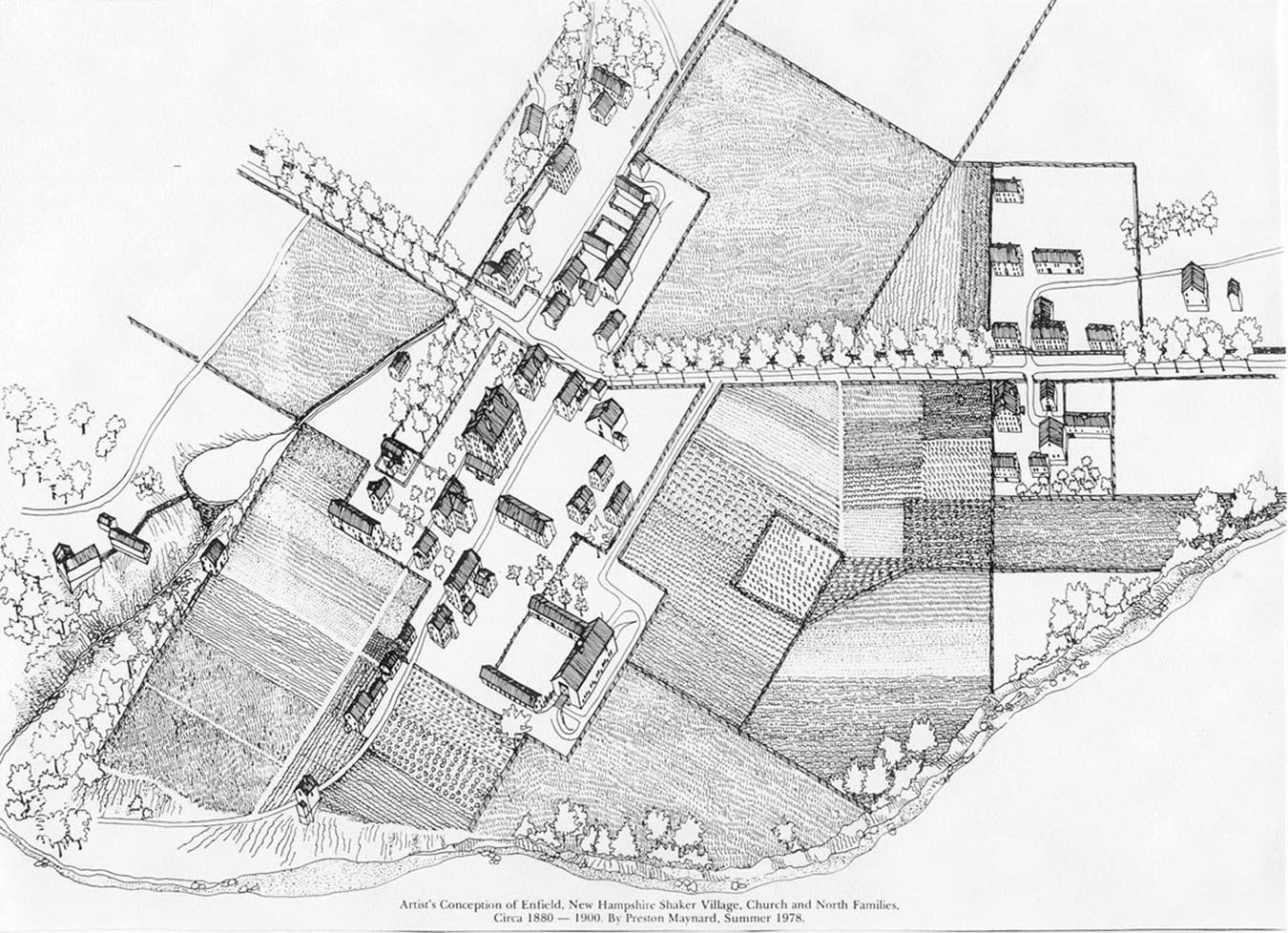Enfield Shaker Village Walking Tour

The Great Stone Dwelling
The centerpiece of the Enfield Church Family is the building the Shakers simply referred to as the Stone House. The Great Stone Dwelling is an example of what Shaker scholars refer to as a second-generation dwelling house.
Mary Keane Chapel
The Mary Keane Chapel dates from the post-Shaker era at the Church Family site. Designed by Donat R. Baribault of Springfield, Massachusetts, the chapel was built for the Brothers of the La Salette Order with funds donated by their benefactress, Mary Keane.
Laundry and Dairy
A three-part structure, the original section of the Church Family Laundry and Dairy complex dates to 1813 making it the oldest existent building at the Enfield Shaker Museum. This original structure was a two-story building which was expanded in 1833 to better accommodate the increasing population of the Enfield Church Family.
Cow Barn
The Enfield Church Family Cow Barn is an example of a group of Shaker agricultural structures known as Great Barns. Shaker Great Barns were roughly constructed between the mid-1820s and the mid-1880s.
The Church Family Cemetery
The role and importance of cemeteries in Shaker communities and among the World’s People evolved throughout the nineteenth century. Most important to the Shakers’ relationship with death was their theological belief that there would not be a resurrection of the dead.
Second Family Cemetery
The design of cemeteries in Shaker communities and among the World’s People evolved throughout the nineteenth century. Most important to the Shakers’ relationship with death was their theological belief that there would not be a resurrection of the dead.
Stone Machine Shop
Constructed in 1849, this structure housed three stories of water power machinery. The Stone Machine Shop was built to replace an 1812 mill that was located on the same site before its destruction in a large fire on July 28, 1849 which also claimed the adjacent threshing barn.
Ministry House
This building, the last constructed by the Enfield Shakers, bears stylistic hallmarks of the Victorian era in which it was constructed representing the confluence between the Shaker and Victorian aesthetics.
West Meadow Barn
Located across from the Stone Machine Shop on the South Side of the stream is the West Meadow Barn. Constructed in 1856, very little is known about this structure. An 1858 history of the community briefly mentions that construction began in 1856 on a “barn in the meadow.”
Brethren’s East Shop
Though used early on as a schoolhouse, the Brethren’s East Shop was primary used throughout its history as the tailoring workshop for the Brethren. In Shaker communities throughout the United States, it was customary for Shaker tailors to create the clothing for the men of the community.
Brethren’s West Shop
From 1896 to 1923, the Brethren’s West Shop served as the home and workshop for Franklin Young (1845 – 1935), Enfield’s last Shaker Brother. During his time in residence, Brother Franklin used the first floor his work space and the second floor as his private living quarters.
Feast Ground on Mount Assurance
In 1843, the Enfield Shakers began construction on a flat plateau near the top of Mount Assurance to accommodate this new outdoor workshop. In the center of the Feast Ground was the “Holy Fountain.”
Museum Herb Garden
For the Shakers, the production of herbs was an important community industry. In the New Hampshire Bishopric, the Shakers listed around 150 different types of herbs for sale to the World’s People.

